By Beatrix Ambery
BookTok, the TikTok community dedicated to discussing books, has been praised for its ability to launch and accelerate the careers of lesser-known authors. It is responsible for widening the publishing pool to include those who write under less traditional circumstances. Colleen Hoover, for example, went from an ex-social worker who self-published her work on Amazon to a New York Times bestseller published by HarperCollins, largely thanks to BookTok promotion. Hoover’s success story is not isolated – several self-published works have been picked up by leading publishers in a similar fashion. However, although Booktok is effective at introducing new and unknown authors to the literary market, it cannot necessarily be considered a non-discriminatory, diverse way to discover your next read.
The main reason for this is the TikTok algorithm – an algorithm that pushes the same four or five books consistently. If you view a TikTok about one book, TikTok is likely to show you another one discussing that same book, boosting that book and account’s popularity. TikTok’s algorithm records videos you like or don’t like, who you follow, your search terms, which videos you watch to the end and which videos you share. Influencers produce short form content about the most discussed books in response, aware that this is what will make their videos popular on the app. Thus, an echo chamber is created, where the same handful of novels is repeatedly mentioned. Of course, new books and authors do sometimes make an appearance on the app, but the majority of successful videos on BookTok will follow algorithm-led trends. Users will consistently be shown ‘BookTok books’ like It Ends With Us by Colleen Hoover, The Song of Achilles by Madeline Miller or Fourth Wing by Rebecca Yarros, because this brand of content has a higher chance of being popular. The content’s pre-established following generates an increased profit for influencers, their sponsors, authors and their publishers.
Noticeably, all of the aforementioned authors are white. Hardly any of the authors who blow up on TikTok are people of colour. BookTok offers a narrow insight into the literary market: modern books are often limited to their trendiness, and classics are favoured for their cloth bound aesthetics. Widening the canon is not the primary motivation for most book influencers or their viewers. Tyler McCall, who writes for The Cut, sees this problem as ‘an extension of racial inequity in the publishing industry overall’(2022). Whilst I agree with him, I believe that more of the responsibility needs to be shouldered by TikTok users. User generated content is partly a response to the books that the publishing industry is releasing, and partly a reflection of society. If BookTok’s diversity is stunted, it is because a portion of society and industry is refusing to support marginalised authors. Influencers, especially those with a large established following, have a duty to discover and support diverse authors and their content. Followers should embrace new content and want to add new narrative perspectives to their bookshelves. A shift in community mindset is required in order to diversify the platform. To encourage this change, publishers should include a larger variety of marginalised authors in influencer PR packages. Literary blogger Sharee says that she has ‘seen the most creative content coming out of the Black literary community and when asked if they even got a free book in exchange for the marketing production they rolled out, the answer is almost always no’ (2022). In light of this, publishers also need to adequately reward the free promotional material that comes from black influencers.
Perhaps another reason as to why Booktok fails to articulate a diverse range of books is because it seeks to appeal to a small segment of society. The majority of videos are made for teenagers or young adults and are predominantly targeted towards women. This is largely due to the nature of social media: TikTok in particular was only launched in the UK in 2018, so is a fairly new and youth oriented way to receive book recommendations. Additionally, a lot of the books that trend on the site tend to conform to the genres of either romance or fantasy. Although the growth of diversity on the app is stunted by it having such a specific target audience, it could be argued that this is what makes BookTok such a close knit community. Commonality between influencers and their audiences creates closer and more personal relationships. The drawback of this is that a whole range of people feel neglected and unwelcome to participate in BookTok culture.
Like most areas of the publishing industry, BookTok could be more diverse. There are, however, steps that publishers and TikTok users alike could take in order to encourage diversity across the platform. It feels important to acknowledge within this article that there are already voices on BookTok who are celebrating marginalised authors and a less narrow snapshot of contemporary literature. If you are interested in supporting a more diverse Booktok, these are some pages that are worth a follow: @the_caffeinatedreader, @kimmybookss, @justgreggy and @bookishbytammi. BookTok can provide success for overlooked authors through its broad reach and accessibility – its marketing capabilities just need to be applied in a more inclusive way. For further discussions of diversity within online book communities, be sure to check out our upcoming podcast on Spotify.
McCall, T. (2022). ‘BookTok’s Racial Bias’ The Cut (November). Available at: https://www.thecut.com/2022/11/booktok-racial-bias-tiktok-algorithm.html (Accessed 12th March, 2024).
Oulton, E. (2024). ‘The best Booktok books to read in 2024’ Pan Macmillan. Available at: https://www.panmacmillan.com/blogs/general/best-booktok-books (Accessed 19th March, 2024).
Sharee. (2022). ‘How do I get on a Book Publishers Media List?’ The Sistah Girl Next Door Blog, 8 February. Available at: https://shareehereford.com/latest-updates/how-to-get-on-book-publishers-media-lists/ (Accessed 20th March, 2024).
Turner, E.E. (2023) ‘Colleen Hoover’, Current Biography, 84(5). Proquest, Available at: https://www.proquest.com/docview/2811273582/abstract?accountid=10342&parentSessionId=AxISvBLfDiNHfmkmBJkuk9o%2FU2PLqYlQw74Hp8YlY40%3D&source=fedsrch&sourcetype=Magazines# (Accessed 13th March, 2024).

